Automobiles have come a long way since their beginning in the late 19th century. One of the major things that has helped automobiles to provide more safety and convenience, though, is electronics. With the advances in technology and electronics, car manufacturers have been able to offer a wide variety of services and conveniences that many new automobile owners appreciate. From the creation of the Electronic Fuel Injection to the popular Global Positioning System found standard in many cars today, the auto industry has revolutionised the way people travel from place to place.
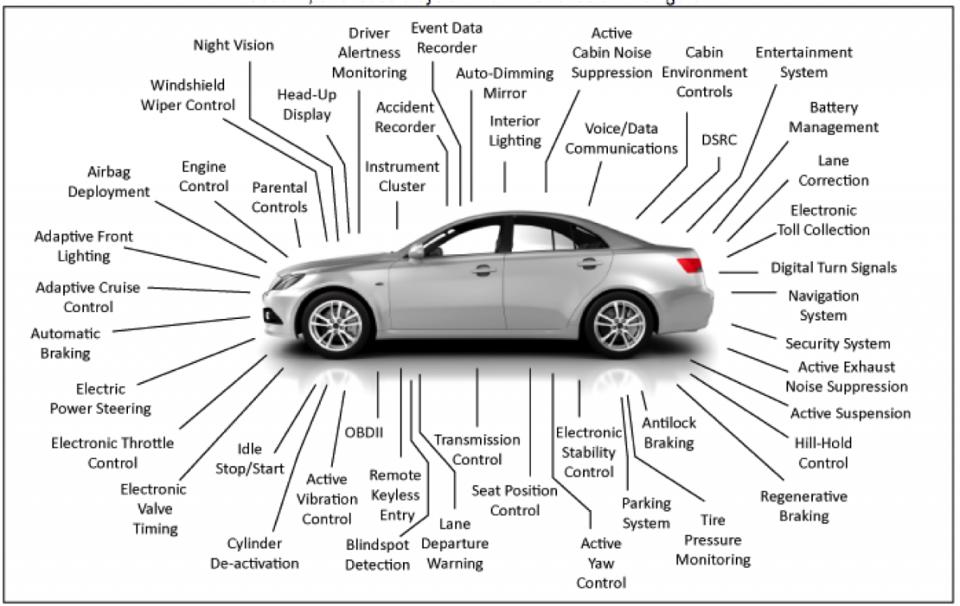 Electronic Fuel Injection, or EFI
Electronic Fuel Injection, or EFI
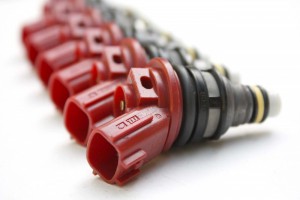 One of the best innovations that electronics have created in the performance of automobiles is the Electronic Fuel Injection, or EFI for short. This device takes the place of the normal carburetor that has been the normal until recently. The job of the carburetor was typically the part of the engine that helps to evaporate fuel so that it mixes with the air for combustion. This provides power to the cylinders which helps the engine operate. A floating device within the carburetor is used to regulate the amount of fuel that the engine receives.
One of the best innovations that electronics have created in the performance of automobiles is the Electronic Fuel Injection, or EFI for short. This device takes the place of the normal carburetor that has been the normal until recently. The job of the carburetor was typically the part of the engine that helps to evaporate fuel so that it mixes with the air for combustion. This provides power to the cylinders which helps the engine operate. A floating device within the carburetor is used to regulate the amount of fuel that the engine receives.
The EFI, on the other hand, uses a completely different technology to supply power to the engine. Instead of a floater that regulates the fuel to the engine, the EFI system electronically meters the fuel so that the exact amount needed is provided to the engine. In short, the EFI uses to fuel to power the engine by pumping it forcibly by using high pressure through a small nozzle or valve. This is how the EFI supplies the proper amount of fuel to the combustion process. The EFI system provides a great deal of benefits over the carburetor, too. Not only does this new technology prevent the engine from flooding by allowing too much fuel into the engine, but it is also more efficient and emission-friendly. The EFI system is also compatible with alternative fuels and it is more reliable than the traditional carburetor. You will also notice a smoother ride and more engine power with an EFI system.
Computer Diagnostics
 The field of computer diagnostics has also helped to shape the way that automobile owners use their cars. The cars manufactured in the last couple decades have been built with a computer on-board to help owners realise engine problems or other problems before any damage is done. Before the computer diagnostics technology, most car owners did not know something was wrong with the engine until something drastic happened, such as overheating or running out of gas. Mechanics generally had to endure a trial-and-error method to find out what was the problem in many cases.
The field of computer diagnostics has also helped to shape the way that automobile owners use their cars. The cars manufactured in the last couple decades have been built with a computer on-board to help owners realise engine problems or other problems before any damage is done. Before the computer diagnostics technology, most car owners did not know something was wrong with the engine until something drastic happened, such as overheating or running out of gas. Mechanics generally had to endure a trial-and-error method to find out what was the problem in many cases.
Now, however, computers in the cars constantly check the engine and its components to make sure it is always up to its optimum performance. When a problem arises, a corresponding light in the dashboard comes on so you know to take it to the mechanic as soon as possible. The computers use many sensors to detect temperature, fluid levels and many other aspects of an engine’s performance. Many times, the computers in the car will provide a code that mechanics can read so they know exactly what has malfunctioned. They have state-of-the-art equipment that they can attach to the car and find out the reason for the malfunction. While this is a very convenient solution to many engine problems, it does require very expensive equipment, such as oscilloscopes, a digital volt-ohm meter, sensor stimulators and high-tech computers to determine problems. It also requires extensive knowledge about how to use the technology. Mechanics often need to go through training to use this method.
All-Wheel Drive / AWD
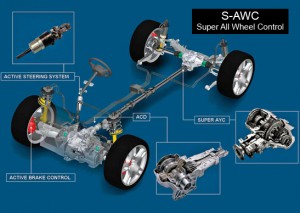 Another great innovation – all-wheel drive (AWD) – has been a great addition to automobiles. This is commonly referred to as four-wheel drive or even 4×4. It means that all four wheels on the vehicle are receiving power from the engine rather than just two of them. This is a popular feature for sport utility vehicles, but it is becoming quite common among sports cars and other smaller vehicles because of its safety capabilities. With AWD technology, cars get better traction on ice and wet roads and it also gives the driver more control over the car.
Another great innovation – all-wheel drive (AWD) – has been a great addition to automobiles. This is commonly referred to as four-wheel drive or even 4×4. It means that all four wheels on the vehicle are receiving power from the engine rather than just two of them. This is a popular feature for sport utility vehicles, but it is becoming quite common among sports cars and other smaller vehicles because of its safety capabilities. With AWD technology, cars get better traction on ice and wet roads and it also gives the driver more control over the car.
The technology for AWD was first thought of in 1900 by the Porsche manufacturer, but it did not become popular until World War II. The idea was great for military vehicles that needed to travel over many different terrains and fields. After that, the idea was eventually implemented into civilian vehicles. The American Motors Company created the first complete line of all-wheel drive passenger vehicles in 1980. The Eagle was the most popular model in this line. Now, there are several different types of AWD technology that differs among the different car models, including the centre differential with mechanical lock, Torsen centre differential, multiple clutch systems and several others. It also includes electronic traction control devices as well as an electronic transfer case that shifts control between the front and the rear axles.
Airbags
Another improvement in safety that electronics have provided is the airbags that are now standard in cars. Technically known as a Supplementary Restraint System (SRS), Air Cushion Restraint System (ACRS), or a Supplemental Inflatable Restraint (SIR), these provide a great deal of safety for the driver and passengers in a car. Created in 1952, the air bag technology is based on electronic sensors that measure the amount of quick deceleration through an accelerometer. This is a small electronic chip that moves as a result of fast deceleration and, as a result, signals the rapid ejection of the airbags. Car manufacturers are currently working on new airbag calculations to make them more effective and to help prevent unnecessary deployments. The new calculations will take into account the position of the seats, the use of a seat belt and the weight of the occupants to help determine when (and if) the airbag should be deployed.
Global Positioning System (GPS)
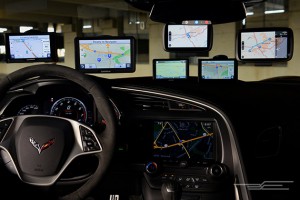 The Global Positioning System (GPS) is a popular device that has made a splash in automobile electronics in recent years, too. These are basically electronic navigation devices that use satellites to monitor many aspects of an automobile. By using satellites, the GPS company can find the location of your car, the direction it is moving and the speed at which it is moving. As a result, your car can easily be found if it is stolen. The idea for this technology was first created in 1978 and used as an experimental device for the United States Department of Defence. Like most automobile technology, though, the idea quickly made its way into the civilian vehicles due to popular demand. A GPS will also give you step-by-step voice directions to your destinations, which tends to be the most popular feature of this electronic device. It can also come in handy if you lock your keys in your car. With a simple call to the GPS service provider, a representative can send a satellite signal to your car and unlock the doors. These devices are also great in a wide variety of emergencies, so they provide peace of mind in addition to safety and convenience.
The Global Positioning System (GPS) is a popular device that has made a splash in automobile electronics in recent years, too. These are basically electronic navigation devices that use satellites to monitor many aspects of an automobile. By using satellites, the GPS company can find the location of your car, the direction it is moving and the speed at which it is moving. As a result, your car can easily be found if it is stolen. The idea for this technology was first created in 1978 and used as an experimental device for the United States Department of Defence. Like most automobile technology, though, the idea quickly made its way into the civilian vehicles due to popular demand. A GPS will also give you step-by-step voice directions to your destinations, which tends to be the most popular feature of this electronic device. It can also come in handy if you lock your keys in your car. With a simple call to the GPS service provider, a representative can send a satellite signal to your car and unlock the doors. These devices are also great in a wide variety of emergencies, so they provide peace of mind in addition to safety and convenience.
Hybrid Cars
This section would not be complete without talking about the electronics that is required to drive a Hybrid vehicle and one of the best examples is the Toyota Prius. This car uses the computer and digital electronics to manage the change between the differing combinations of power sources and due to electronics is pretty seamless if it weren’t for the energy consumption screen located in the Prius’ centre console the driver would have little indication the complexity of it all this technology is called Hybrid Synergy Drive (HSD).
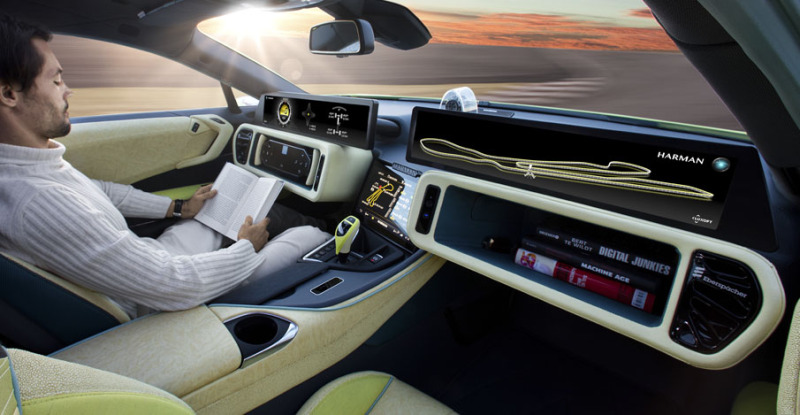
The Future
With brilliant minds working in the auto industry, there are limitless possibilities to what the manufacturers will include in their products in the coming years. In fact, the Lexus company now has a vehicle that will automatically parallel park your vehicle without the driver even needing to touch the wheel. If we look to the technology and electronics that are being used in the military vehicles, we can often predict the services that will be in civilian vehicles in the near future. This tends to be a trend in the automobile industry and will likely continue as people always want and expect more from their cars.
for more on self-driving car.
Use code carsaddiction for 20% off!